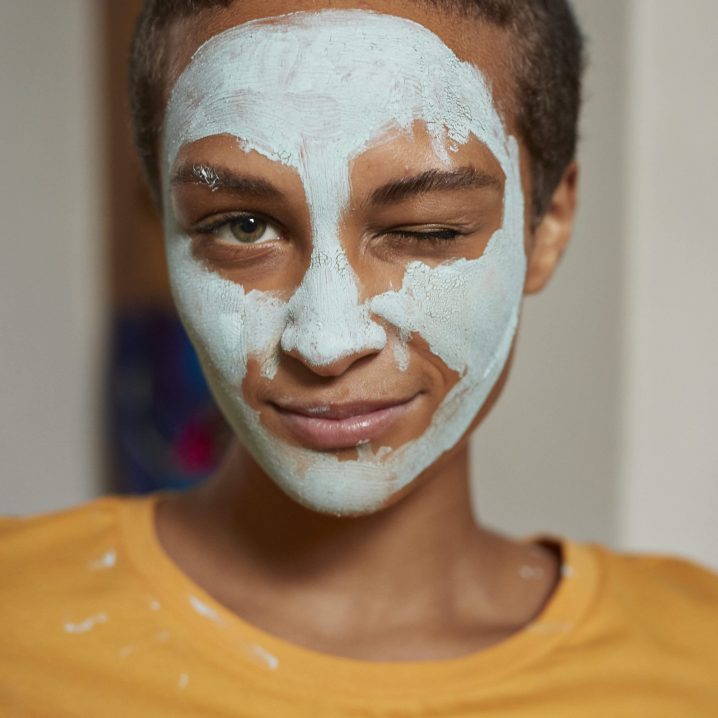What if we told you that new pimple that just popped up out of nowhere isn’t as random as you thought? According to face mapping, an ancient Chinese technique, breakouts can correlate with a specific organ or something internal in the body (like hormones) or, can be triggered by something as simple as your hair-care routine.
To decode your breakouts and determine the initial cause of the issue, you first need to look at the specific area of the face where the new pimple popped up. Is it on your cheek? On your forehead? Or do you only get acne on your chin? These types of breakouts all mean different things.
“Face mapping plays off the idea that energy flows along pathways between organs, and different zones of the face will correlate to specific organs,” board-certified dermatologist Jessie Cheung, MD, of Cheung Aesthetics and Wellness told POPSUGAR. “Pimples, redness, or dryness on the face are thus attributed to internal organ imbalances.”
Ahead, learn more about pinpointing the problem based on the location of your breakout.
Forehead Breakouts
Forehead breakouts tend to be related to stress or an unhealthy diet. “[These] breakouts are associated with your small intestine, and the area between your brows is specific to your liver,” said Dr. Cheung. While it’s hard to control external stress in your life, the best way to prevent it from manifesting itself on your skin is by taking regular time for yourself to relax and unwind. Additionally, cleaning up your eating habits can help, too. “So, increase your fiber intake, and avoid alcohol.”
Another common culprit: your hair products clogging your pores. “We call it acne cosmetica,” said board-certified dermatologist Michelle Henry, MD. “Oily hair products can clog the pores causing acne.” Additionally, people with bangs may find fighting forehead breakouts to be hard to beat. To combat this try to avoid touching your fringe as much as possible and be sure to wash your face thoroughly – which means pulling your bangs aside and out of the way – regularly. “Retinoids are great treatments for this type of concern,” said Dr. Henry.
Cheek Breakouts
“Cheeks are connected to your stomach and lungs,” said Dr. Cheung, citing Chinese medicine. “Stay away from cold drinks to avoid upsetting your stomach, and avoid smoking.”
But if you’re experiencing acne on your cheeks and you don’t smoke, it could be a result of external aggressors like your phone or pillowcase. “This is treated with topicals like benzoyl peroxide or salicylic acid and cleaning anything that comes into contact with that area regularly,” said Dr. Henry.
Nose Breakouts
Breakouts, specifically blackheads, on your nose are usually a result of an oily T-Zone. “This is a common area for acne,” said Dr. Henry. “Hormones or increased perspiration and oiliness from warm environments can increase acne in this area.” If you notice your skin looks congested in this area of your face, Dr. Henry recommended retinoids to treat it.
Jaw or Chin Breakouts
Acne on your chin or jaw can almost always be traced back to hormones. The hormone androgen overstimulates oil glands and alters the behavior of skin cells, contributing to acne flare-ups.
“Your jaw corresponds to your reproductive organs,” said Dr. Cheung. Your best bet for fighting this type of acne is using detoxifying products to control oil and keep your pores clear.” Niacinamide is an antioxidant with a clinically demonstrated sebum- regulating action, making it a great ingredient to look for if hormones are causing your skin to overproduce oil.
If all else fails and the problem persists, visit your dermatologist to learn about more options. Dr. Henry explained she often uses oral medication like to treat hormonal acne.
Shop a Product to Reduce Blemishes
If you’re looking for a product that will help reduce the appearance of acne, Garnier’s AHA+BHA Anti-Blemish Serum ($34.99) contains a highly concentrated formula of 4% [AHA+BHA, niacinamide and charcoal] to help reduce blemishes and residual dark marks. Th

